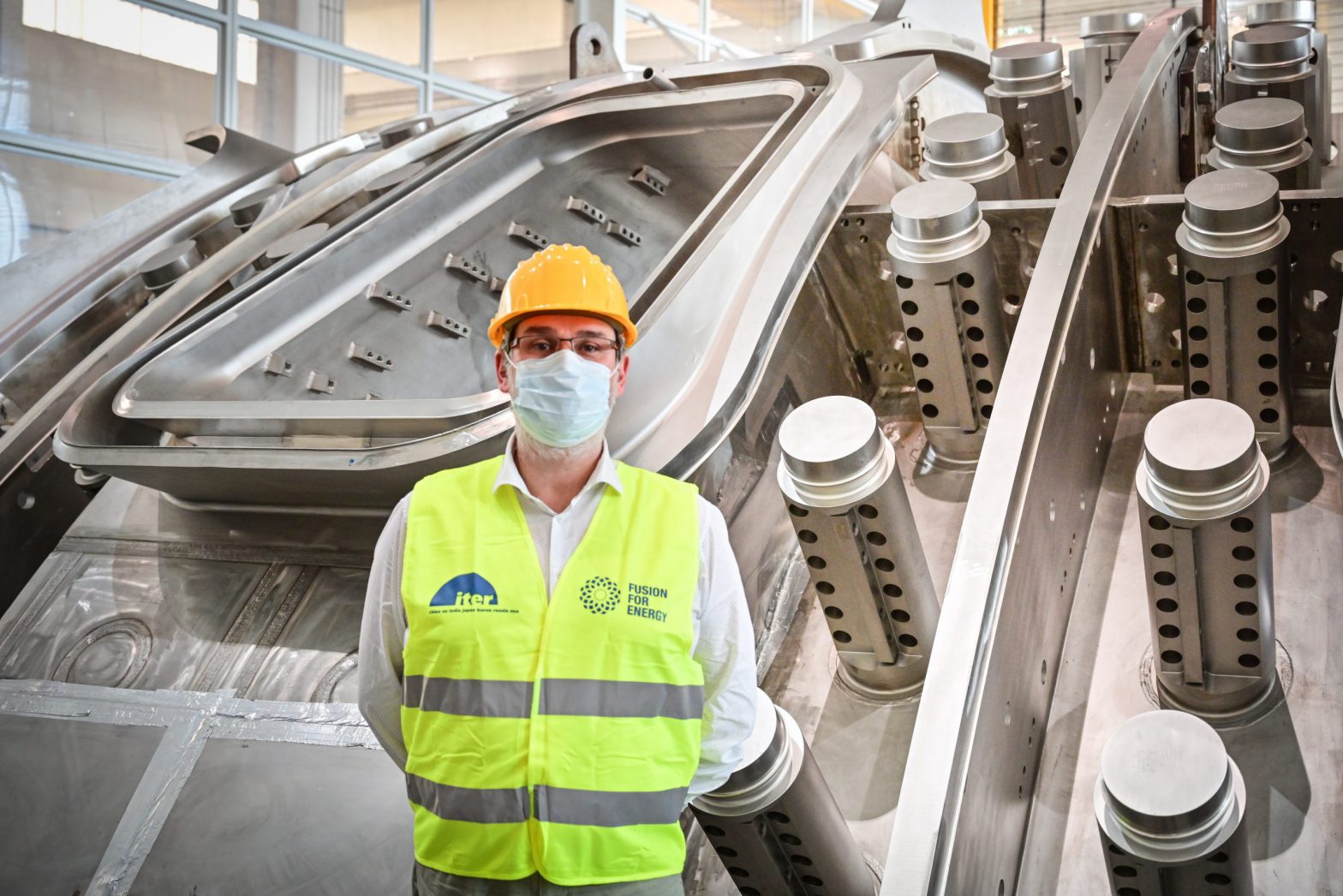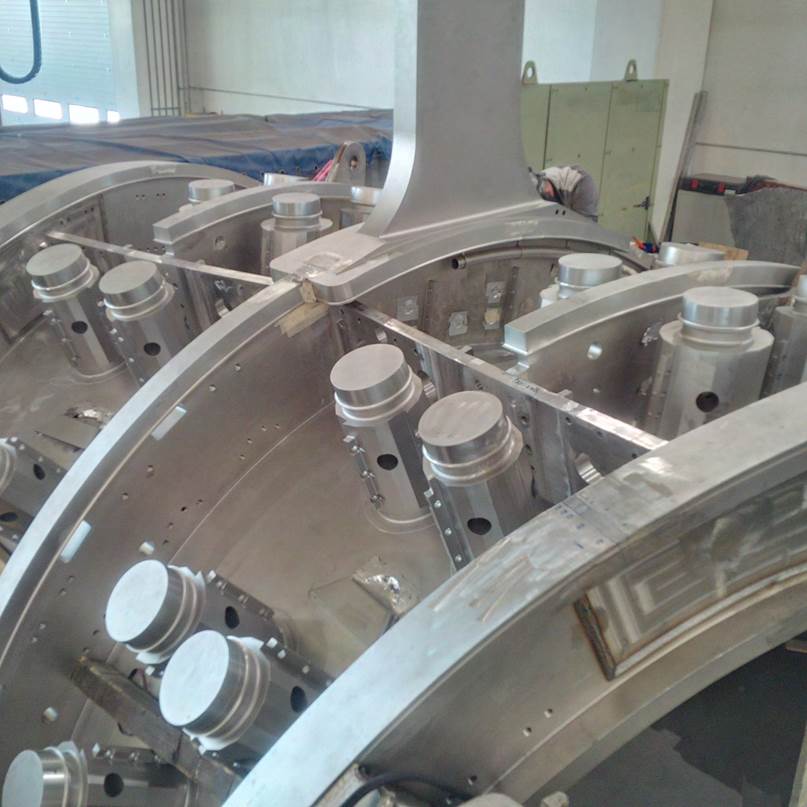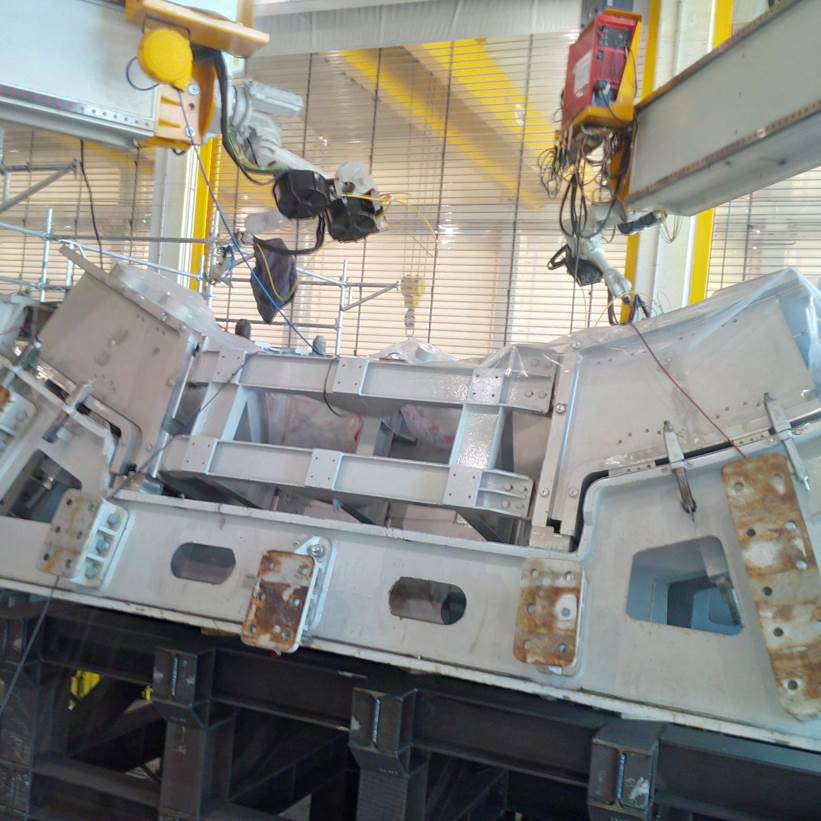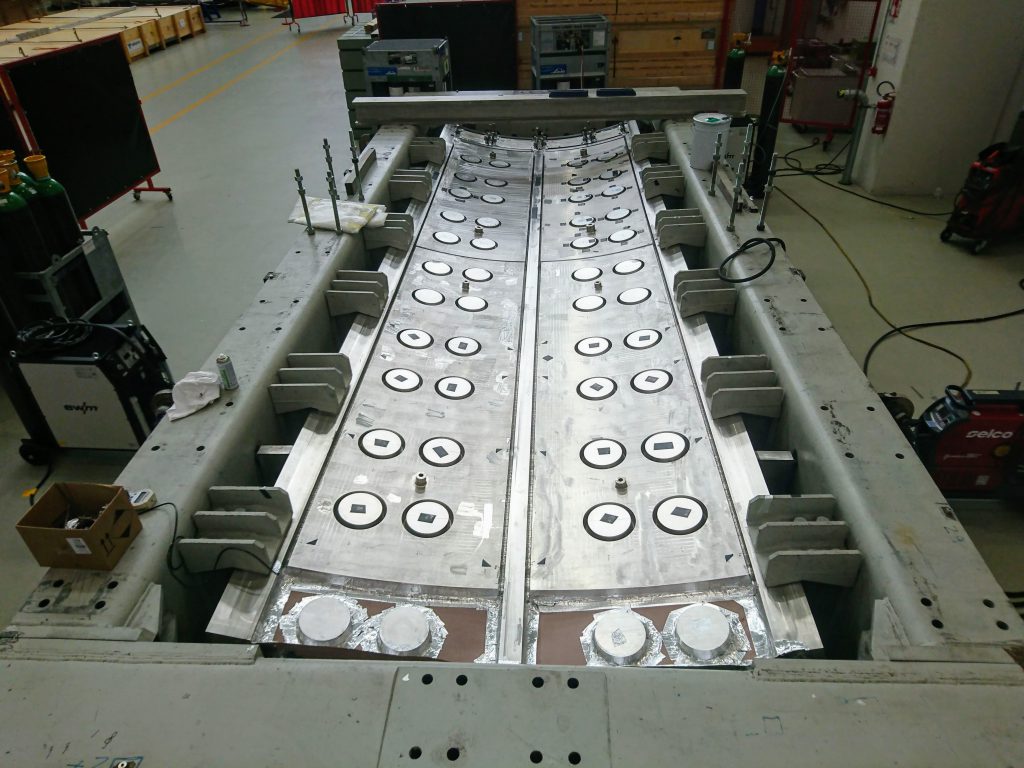Europe’s industrial partners of ITER Vacuum Vessel stand up to coronavirus

Max Febvre, F4E Manufacturing Project Manager for the ITER Vacuum Vessel, in the Walter Tosto factory, Chieti, where European sectors are manufactured.
Five of the nine sectors of the ITER Vacuum Vessel are produced in Europe. F4E is working with a consortium of three Italian companies –Ansaldo Nucleare, Mangiarotti, Walter Tosto— to deliver Europe’s share of the stainless steel container which will house the biggest fusion reaction. Apart from supervising works performed in Italy—Chietti, Mantova, Monfalcone, Ortona—F4E and its suppliers are also responsible for the co-ordination of an impressive supply chain located in Spain, France and Germany. Already under normal circumstances working with so many factories is stressful and demanding. How did they cope when coronavirus knocked on Europe’s door starting from Italy? With a calm temper, an iron will and a plan to carry on.
Max Febvre, F4E Manufacturing Project Manager for the Vacuum Vessel, co-ordinates the work of teams based in the five main production sites. He is based in Walter Tosto, Chieti, where parts of the work for the fifth sector are unfolding. “We had to analyse the impact of the pandemic on our production plants, figure out which tasks could be performed in line with the instructions issued by the Italian authorities, and adopt measures of health and safety in line with this new reality. Therefore, we re-arranged the planning of activities, prioritised some critical ones. We put forward a short-term plan to keep up the progress, while ensuring full compliance with protocols.” The impact of the pandemic was not as disruptive as expected. In spite of the strict rules of social distancing, the lower number of resources in the workshops, and the new measures in place, together with our industrial partners we demonstrated a tremendous amount of resilience. Approximately 80% of sector five has been manufactured and 74% of sector four. There has been progress with the machining of the massive pieces of the vacuum vessel, the welding of various parts, the radiographic and ultra-sonic tests performed.

Why is the fabrication of the vacuum vessel proving so challenging? To begin with, the component is one-of-a-kind and has a geometry which is far more complex than it seems. None of the vessels produced in the market for other devices were suitable for ITER. Engineers had to develop original designs for its fabrication. And to make matters more complicated, this double-shell vessel will act as a barrier between the fusion reaction and the rest of the machine. Therefore, it needs to comply with high nuclear standards set by the French authorities. Second, this massive stainless steel structure should be able to cope with the powerful electromagnetic forces. In other words, to have a subtle level of in-built flexibility is required to adjust accordingly. The vacuum vessel will count a total of 6.6 km of welds (approx. 730 m/sector) of which 2.5 km will be performed by electron beam welding. Experts opted for this type of welding because it minimises distortions and has proven to be more efficient due to the fact that it can be performed in one go. But the level of thickness and the tight tolerances we need to meet are raising the stakes—each of the 10 000 welds will be 60-80 mm thick.

The works in the workshops of Chieti and Monfalcone are advancing in parallel as different parts of the same sectors are in production. The inner shell welding of the first European sector is expected to be completed in a few months. Out of all sectors, the fifth is the most advanced whose poloidal segment 1 is almost ready, while poloidal segment 4 is in the phase of final cleaning before it goes through various tests. “Approaching the completion of the first poloidal segment is an important achievement because it has served as a valuable learning curve for the production of the ones to follow. We had to put in place a supply chain, counting approximately 10 companies working with Mangiarotti, and capitalise on their expertise in order to deliver,” explains Andres Dans Alvarez De Sotomayor, F4E’s Technical Officer, following the fabrication in Mangiarotti where more than 150 employees have been involved in the manufacturing of the vacuum vessel.

For Cristian Casanova, F4E’s Vacuum Vessel Programme Manager, the effort to guarantee a continuity of works during the COVID-19 outbreak proved to be a change of fortune for the progress of the vacuum vessel. “Factories were in a lockdown mode facing uncertainty about their production line and scepticism about the re-start of operations. But thanks to the unconditional dedication and the resilience of the entire team, we managed to continue the works responsibly in spite of the many difficulties. Almost in a paradoxical way, the virus that gave birth to social distancing generated a strong team spirit and brought even closer F4E to its industrial partners. The imaginative solutions and progress outcomes clearly show that this close collaboration is the best way forward to deliver this complex component.”
As Italy and the rest of the countries are progressively returning to a post-COVID-19 normality, works are ramping up in the factories working for the European sectors of the vacuum vessel. So what’s coming next? First of all, a lot of hours will be spent on mechanised welding up to 1.6 km for all five sectors. Then, teams of experts will conduct extensive radiographic and ultrasound tests of the components. Machining activities will also come in the picture prominently in the workshop of Walter Tosto, Ortona. In fact, one of the biggest portal milling machines in the world will be used (10 m high, 10 m wide and is 35 m long).
The unprecedented standstill due to coronavirus did not manage to put the brake on the manufacturing activities of the vacuum vessel. On the contrary, it motivated workforces to keep going by adopting new measures and strengthened their will to deliver. All efforts are now steered towards the completion of Europe’s first sector.